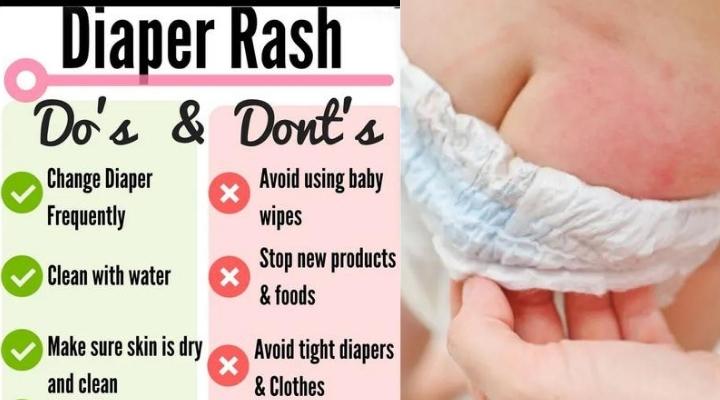Must-know Tips about Diapering – Every Parent Should Know
Parenthood brings an avalanche of joy, love, and excitement, but it also comes with a series of responsibilities, one of which is diapering. In this article, we will explore Must-know Tips about Diapering – Every Parent Should Know to ensure their baby’s well-being and peace of mind. For new parents, the prospect of diapering can be daunting, but with the right knowledge and preparation, it can become a smooth and enjoyable process. Diapering is not only about keeping your baby clean and dry; it is also a crucial aspect of their overall health and comfort.
Must know Tips about Diapering – Every Parent Should Know
Choose the Right Diapers-
Selecting the right type of diaper is crucial for your baby’s comfort and skin health. There are two main types of diapers: disposable and cloth. Each has its advantages and drawbacks, so it’s essential to weigh your options.
Disposable Diapers-
These are convenient and widely used due to their easy disposal after use. They often come with indicators to show when the diaper needs changing. Look for a reputable brand that offers good absorbency and is gentle on your baby’s skin.
Cloth Diapers-
While cloth diapers require more effort in washing and maintenance, they are an eco-friendly option and can save money in the long run. There are various cloth diapering systems available, including prefolds, fitted diapers, and all-in-ones. Experiment with different types to find what works best for you and your baby.
Maintain Proper Hygiene-
Keeping your baby’s diaper area clean is crucial to prevent diaper rash and other skin irritations. Here are some hygiene tips:
- Wash your hands thoroughly before and after changing diapers to prevent the spread of germs.
- Use fragrance-free and alcohol-free wipes to clean your baby’s bottom gently. Alternatively, you can use a soft, damp cloth or cotton balls with warm water.
- For girls, always wipe from front to back to avoid introducing bacteria from the rectum to the urinary tract.
- For boys, cover the penis with a clean cloth or diaper while changing to avoid surprises.
Related-10 Best Baby Massage Oils – Which Oil is Best for Newborn
Establish a Diaper Changing Station-
Designate a diaper-changing station in your home with all the necessary supplies at hand. This will help streamline the diapering process and ensure that you have everything you need within arm’s reach. A well-equipped changing station should include:
- Diapers (disposable or cloth)
- Baby wipes
- Diaper rash cream or ointment
- Changing pad or a soft, washable mat
- Disposable bags for easy diaper disposal
- Hand sanitizer or baby-safe sanitizing wipes
Practice Safe Diapering Techniques-
Safety is of paramount importance during diaper changes, especially as babies can be quite wiggly. To ensure your baby’s safety:
- Always keep one hand on your baby while changing to prevent accidental falls.
- Never leave your baby unattended on the changing table or any elevated surface.
- Securely fasten the diaper to avoid leaks, but make sure it’s not too tight to allow for proper air circulation.
- If using cloth diapers with pins, be extra cautious when securing them to avoid pricking the baby’s skin accidentally.
Follow a Diaper Changing Routine-
Babies thrive on routines, and diaper changing is no exception. Try to establish a consistent diaper-changing schedule to minimize discomfort and prevent diaper rash:
- Newborns: Newborns typically need frequent diaper changes, up to 10-12 times a day, as they have small bladders and bowel movements more frequently.
- Older Infants: As your baby grows, you may change diapers around 6-8 times a day, depending on their feeding and hydration habits.
- Toddlers: For toddlers, 4-6 diaper changes per day may be sufficient.
Remember, every baby is different, and you’ll quickly learn their specific diaper-changing needs.
Don’t cover the umbilical cord stump-
One essential tip for newborn care is to avoid covering the umbilical cord stump. The umbilical cord stump is the remnant of the connection between the baby and the placenta during pregnancy. It usually takes around one to three weeks to dry up and fall off naturally. During this time, it is crucial not to cover it with tight clothing or diapers to allow air circulation and promote healing. Leaving the stump exposed to air helps prevent moisture buildup, reducing the risk of infection. Keeping the area clean and dry is essential for ensuring a smooth healing process and a healthy belly button for your little one.
Treat Diaper Rash Promptly-
Despite your best efforts, diaper rash may occur at some point. It’s crucial to address it promptly to avoid further discomfort for your baby. Here’s how to treat diaper rash effectively:
- Keep the diaper area clean and dry. Gently pat the skin dry instead of rubbing, as rubbing can further irritate the skin.
- Apply a thin layer of diaper rash cream or ointment containing zinc oxide to create a barrier between the diaper and your baby’s skin.
- Let your baby go diaper-free for short periods to allow the skin to breathe and heal.
- If the rash persists or worsens, consult your pediatrician for proper medical advice.
Be Mindful of Diaper Size-
As your baby grows, their diaper size will change. Using the wrong diaper size can lead to discomfort and leaks. Keep an eye on the diaper’s fit and upgrade to the next size when needed.
- If the diaper leaves red marks or indentations on your baby’s skin, it’s time to switch to a larger size.
- Avoid using diapers that are too big, as they may cause leaks and discomfort.
Diapering is an integral part of parenting, and mastering the art of diaper changes can help keep your baby comfortable, happy, and free from diaper rash. By choosing the right type of diapers, following proper diaper-changing techniques, and taking preventive measures, you can make diapering a breeze for both you and your little one. Additionally, adopting environmentally friendly practices and being prepared for diapering on the go can further enhance your diapering experience. Remember, every baby is unique, so observe your little one’s cues and adjust your diapering routine accordingly. With these must-know tips, you’ll be well on your way to becoming a diapering expert and ensuring the best care for your precious bundle of joy.
Frequent Asked Question-
What type of diaper is best for my baby?
The best type of diaper for your baby depends on your preferences and lifestyle. Disposable diapers are convenient, while cloth diapers are eco-friendly and cost-effective. Consider factors like absorbency, breathability, and environmental impact when making your choice.
How often should I change my baby’s diaper?
The frequency of diaper changes varies with your baby’s age. Newborns may need up to 12 diaper changes a day, while older infants may require 6-8 changes daily. Toddlers may need around 4-6 changes per day. Observe your baby’s cues and change diapers promptly to keep them clean and comfortable.
How do I prevent diaper rashes?
Diaper rash prevention involves keeping the diaper area clean and dry. Change diapers frequently, use gentle wipes or a damp cloth for cleaning, allow diaper-free time, and apply a thin layer of diaper rash cream during each change. Choosing breathable diapers can also help reduce the risk of diaper rash.
Should I use diaper rash cream at every diaper change?
You don’t need to use diaper rash cream at every diaper change unless your baby has a rash or is prone to irritation. Applying a thin layer of diaper rash cream during diaper changes can act as a protective barrier against moisture and friction, but excessive use may clog pores and worsen rashes.
How do I change my baby’s diaper properly?
To change your baby’s diaper properly, place them on a safe, flat surface, unfold the new diaper (if using disposables), and clean the diaper area gently with wipes or a damp cloth. Always wipe from front to back to prevent the spread of bacteria. Allow the skin to air dry before putting on a clean diaper and applying diaper rash cream if needed.
What should I do for nighttime diapering?
For nighttime diapering, use overnight diapers that offer higher absorbency. You can also double up diapers or insert additional absorbent pads in cloth diapers. Ensure a snug fit to prevent leaks and consider changing your baby’s diaper right before bedtime.
How can I ensure hygienic diapering on the go?
Diapering on the go requires some preparation. Invest in a diaper bag to carry essentials like diapers, wipes, creams, and a changing pad. Use portable changing pads in public places, and dispose of waste properly in designated diaper disposal bins or biodegradable bags. Carry hand sanitizer or baby-friendly wipes for hand cleaning.
Are cloth diapers better for the environment than disposables?
Cloth diapers are generally considered more environmentally friendly than disposables. They reduce waste in landfills and have a lower carbon footprint. However, the environmental impact also depends on factors like water and energy consumption for washing cloth diapers. Consider using eco-friendly disposable options if cloth diapers are not feasible for your situation.
How do I clean and maintain cloth diapers?
Proper cleaning and maintenance are essential for cloth diapers. Rinse off any solid waste before storing dirty diapers in a wet bag until washing. Use gentle detergents free from additives and fragrances to avoid irritation. Wash cloth diapers in hot water to ensure thorough cleaning and disinfection.
What if my baby develops a persistent diaper rash?
If your baby develops a persistent or severe diaper rash that does not improve with home remedies, consult a pediatrician or healthcare professional. They can provide personalized advice and recommend specific treatments to address the rash effectively.










